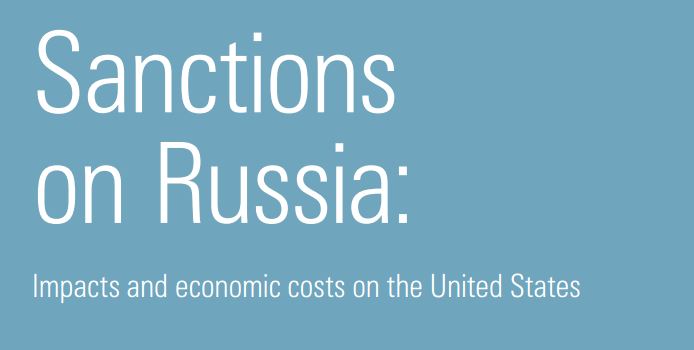A new independent report released on 22 March 2017 shows that US sanctions against Russia’s aggression in Ukraine have been generally effective and have had a minimum impact on the American economy.
The report, commissioned by Rasmussen Global, is now available online.
Its main finding include:
- Sanctions have not harmed US international trade opportunities. Data on the Rust and Corn Belts show that trade with Russia started to fall before 2014 when sanctions were put in place. The reduction in trade started in 2011 when the Russian economy began to deteriorate.
- US GDP growth has risen steadily since the imposition of sanctions, from 1.68% in 2013, to 2.60% in 2015. Quantifying the direct impact of sanctions on US jobs and lost business opportunities is difficult because the numbers are very small. Moreover, most of the impact has long been offset by America’s much stronger economy and ability to diversify its trade. The number of nationwide jobs potentially affected by sanctions – 12,000 according to an ING report – dwarfs the 216,000 jobs that have been created in the US private sector in November 2016 alone. It also dwarfs more than 60,000 job opportunities the US lost each year since its Iran sanctions were in force.
- US-Russia trade volume in goods and services is marginal, standing at less than 1% of America’s total trade with the world. This placed Russia below the top-30 US trading partners in 2015. The US trade deficit with Russia was reduced by almost 42% between 2013 and 2015.
- The impact of US sanctions on Russia is mostly political. They have been effective in signaling the consequences of breaching international norms and America’s credibility in upholding them. If lifted prematurely, they might embolden other actors such as China or Iran to pursue expansionist policies. They have also helped the EU maintain its own consensus on sanctions. Compared to the US, European economies are impacted more: the EU conducts ten times more trade in goods and five times more trade in services with Russia than the US.
- Western sanctions have been effective at restraining Russia from further territorial expansion and keeping the Kremlin at the negotiating table. Together with falling oil prices and a difficult business environment, sanctions contributed to a fall in Russia’s GDP growth from 1.28% in 2013 to -3.73% in 2015. Sanctions against Russia are commensurate with its behavior, as they do not target the whole Russian economy but rather specific individuals, companies and sectors involved in Russia’s aggression in Crimea and eastern Ukraine.
Read also: Rest assured, Marine Le Pen, sanctions against Russia work
In light of Russia's latest escalation in Eastern Ukraine, Rasmussen Global recommends that the US administration considers lethal weapons
if the aggression continues, develops a new tier of sectoral and individual sanctions to include entities involved in the recent expropriation of Ukrainian businesses by Russia’s proxies in eastern Ukraine, as well as links them to human rights violations on Ukrainian territory illegally occupied by Moscow and its proxies.
Read more: What assets did Russia’s puppet republics seize from Ukraine? Full list
As well, it concludes that US President Trump should make enhancing sanctions and coordination with Europe the top of his agenda during the upcoming visit to Europe in the end of May, as well as urges him to appoint a special envoy for Ukraine to engage in negotiations on a peaceful resolution of the war in eastern Ukraine to act alongside Germany and France, who are currently participants of the negotiations in the framework of the Minsk peace deal.
Please fill out this short form so we can bring you the stories YOU want to read. Thank you!

